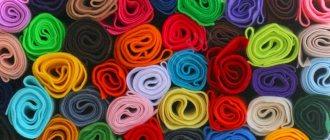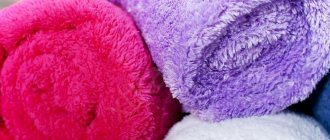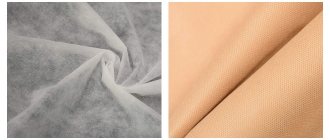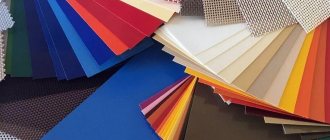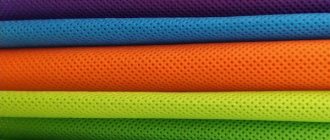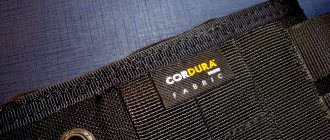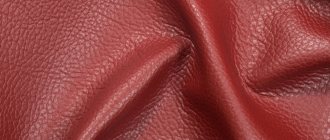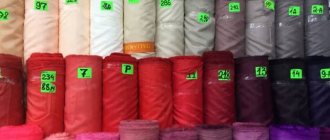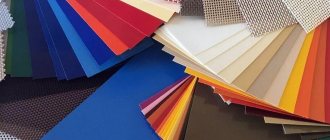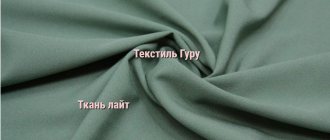History of felt
The main material for making felt is animal wool, mainly sheep. The top layers of hairs have a scaly layer, which adhere to each other under the influence of steam or hot water. However, the wool of wild sheep does not have such a texture, so it is generally accepted that felt was first made no earlier than the 5th-6th centuries BC, and the original material was still the hair of dogs and horses, which were domesticated during that period.
Horses, dogs and sheep were first domesticated by nomadic peoples. The horse helped to carry the heavy load, the dogs guarded the flock of sheep. The most ancient felt products were found on the territory of modern Bashkiria and Altai. Gradually, the technique for making this material passed on to other nomadic pastoralists in Central Asia and the Caucasus.
And in this online store of our partners you can buy very high-quality felt at low prices
With the increase in skill, the Bashkirs acquired the opportunity not only to make products for themselves, but also to sell them to other peoples, for example, a non-woven felt carpet. The Bashkirs generally widely introduced felt products into their everyday life. They were also used as insulation for yurts, as a canopy from rain and sun. Bags and prayer rugs were made from felt. Felt products were necessarily included in the bride's dowry . There is still a custom of placing a small rug of white felt under the bride’s feet when she arrives at the groom’s house. The groom's mother invited the bride to come in and sit on the felt bunks. It was believed that this would help the future family to have many children.
Felt was also credited with medicinal properties. Felt belts were used to treat people from radiculitis and arthrosis. They used strips of felt fabric to massage, which, according to ancient nomads, had a beneficial effect on blood circulation and also helped get rid of back pain. This was especially true for nomads - people constantly in the wind.
Manufacturing technology
Felt manufacturing technology is one of the most ancient. It involves exclusively manual labor and appeared long before the advent of weaving machines and even knitting tools. It is surprising that this technique has survived to our times, and has not sunk into oblivion, like many others. Moreover, products made from felt and felt are very popular not only in Russia, but also in Europe. Wool is used in its production, and sheep wool is best.
So, sheep's wool is laid in thin layers on fabric. Grate the soap. Pour hot water into the soap and shake until completely dissolved. The resulting hot soap mass is applied to the wool. By clapping your palm, the hairs gradually fall off. To increase the density of the fabric, you can apply one or more layers of wool and repeat the felting procedure. When laying wool, it is advisable to ensure that the wool is not laid parallel, it should be laid in different directions. This will give strength to the resulting material. The resulting material must be dried for approximately 24 hours.
When felting wool, it is also worth mentioning a special direction in felting technology - felting . It is often called dry felting. When filing, a special filing needle is used as a working tool, on which notches and notches are applied at different angles. These notches help to snatch individual hairs from the general wool mass and slowly tangle them, forming a felt material. Often, the felting method is used to make not material in the usual sense, but small objects - toys, decorative crafts, small parts for women's and men's accessories. This method is ideal for making and shaping three-dimensional products, while you can help yourself with your hands, pulling out any element if necessary.
The felting method is also often used if it is necessary to create a pattern on already prepared felted material. To do this, felted fabric is placed on a dense object. The drawing is carefully laid out on it. Often this design is secured, for example, with thin packaging film, although experienced craftswomen can easily do without it. Then, with careful and quick movements with a felting needle, the pattern is driven in and imprinted into the felt.
The technology for making felt is practically no different from felt , with the only difference being that finer types of wool are used in the production of felt. Synthetic fabrics are often added to felt . The external finish determines the type of felt - pile or smooth. Pile, in turn, is divided into “suede”, short-pile, “velor” and long-pile. Felt is often used in garments that come into direct contact with the body, such as a hat or scarf, because the felt's texture is pleasant to the body and does not create the slight tingling effect that coarser felts sometimes have.
Felt - what kind of fabric is it?
What is felt? This is a dense non-woven textile material obtained by felting natural or synthetic fibers. Its characteristics are similar to felt, but softer.
Its various varieties are used for the manufacture of toys, jewelry, clothing items, room decor and clothing, as well as for the production of musical instruments.
Types and properties of felt
Initially, felt was made from rabbit or goat fluff; sometimes wool was added for density. Nowadays, various materials are used to obtain such material, including synthetics (acrylic, viscose).
Felt and felt in the modern world
Felt and felt, as a type of felt, are extremely flexible and versatile materials. Despite their ancient history, they are attracting more and more fans, because felt and felt are environmentally friendly, and modern society prefers natural objects and fabrics. Felt products can look quite appropriate in the image of a modern girl and even add some zest. Felt products are often chosen by people who prefer folk or eco-style in the interior.
And it is simply impossible to describe the entire list of manufactured products. These include shawls, scarves, tops, and jackets. Felt slippers are very popular. These materials are often used as decoration for women's accessories - hairpins, brooches. The popularity of felt is just being revived, and this “handmade” material has a great future.
Finally, a selection of photographs of celebrities in felt hats.
And in this online store of our partners you can buy very high-quality felt at low prices
History of felt and felt hats
Felt and felt are materials that have long been used by people to insulate their clothes and more.
Felt
a dense non-woven material made by felting wool or synthetic fibers. In Russia, sheep wool felt was used to make felt boots. Felt can be of different thicknesses depending on its purpose. One of the best materials for making felt is sheep's wool.
Felt (French Feutre)
– this is also felt, only of higher quality. Felt is made from the undercoat (fine fluff) of rabbits, goats, hares and other fur waste from fur-bearing animals. Felt is thinner and more elastic than felt. It is widely used for making hats and berets, used for appliqués, decorations, and also for sewing toys.
Felt is distinguished between smooth and pile. The pile can be of different lengths:
• “suede-like” (pile length less than 0.5 mm) • “short-pile” (pile length from 0.5 to 1.5 mm) • velor (thick standing pile 1.5-2.5 mm long) • “long-pile "(pile length from 3 to 8-12 mm).
In foreign languages, felt and felt are called felt. Therefore, in order to find out what we are talking about, you need to clarify what material is specifically being talked about and what types of wool it is made from.
History of felt hats
Saint Clement I, Bishop of Rome, initiated the use of these materials at the beginning of the new era (100 AD). As the legend says, it was this man of righteous life who earned not only respect from people for his spiritual life, but was also called the discoverer of felt. How did this happen? Most likely this is the case: to insulate his feet, and to reduce friction, he put wool in his sandals. And then I discovered that the wool, under the pressure of feet, friction and humidity, was transformed into dense cloth...
Nowadays, felt (felt, felt) is produced according to the same principle (felting). Wool is a fiber with fellability. The hair fibers have a scaly appearance. During mechanical processing, felting, directional movement of fibers occurs, which allows the fibers to intertwine and interlock with each other. Temperature, humidity and acidic or alkaline conditions make it possible to regulate the felling process. The product shrinks over the area. The shrinkage of felt is 80%. At the same time, its strength increases.
And so, felt is a non-woven material that is made from natural wool or from the fur fibers of various fur-bearing animals.
In the 17th century and beyond, rabbit or hare hair, as well as beaver hair, were used as raw materials in the manufacture of felt hats. Unlike sheep's wool, this wool is sheared from the skin of a dead animal, but only after an etching solution (chemical liquid) has been applied to the ends of the hair, which increases the wool's fellability. Beaver wool was most popular and reached its zenith in the 17th century. The reason was a successful combination of aesthetic and physical properties.
Beaver (castor) hats were valued for their lightness, warmth, beauty, waterproofness and durability. Hats made of sheep's wool quickly lost their shape when wet, and naturally their age was short-lived, moreover, they were heavier than castor ones. Consequently, sheep's wool was not used to make hats. Felt made from beaver fur was highly valued. In the 18th century, beaver skins and fur were almost 50 times more expensive than rabbits and hare. A beaver felt hat was considered a luxury. By the presence of a felt beaver hat, one could judge that the owner had a high position in society.
Finally, the beavers began to disappear. They began to mix beaver undercoat with hare or rabbit fur. And this is where the black pages in the felt hat’s biography begin. In order to mix more expensive wool with less expensive one and at the same time get a beautiful and expensive felt, they began to use ... mercury in the production of hats. The fact is that at the ends of beaver hairs there are notches, which provide a tight weave and high-quality felt, while rabbit and hare hairs have almost no these notches. Therefore, they began to use preparations containing mercury, so that after treatment with them, hare and rabbit skins would have the same properties as beaver skins. And so, the skins of a hare and a rabbit were impregnated with mercury.
Now any schoolchild knows what mercury is and what the danger is in contact with it, no matter what form it is. French hatmakers from the 18th to the early 19th centuries were doomed to a short life. But the life of the cities where felt hats were produced was in mortal danger.
Many felt hats housed at the Victoria and Albert Museum still contain enough mercury to cause health problems for those who handle them, research shows. Therefore, visitors can only see them through cellophane packaging.
While 300 years ago hats were made by hand, these days it is a completely mechanized production. And of course, making felt hats happens much faster and with less physical labor. What about the harmfulness of hat production?
There are still many process steps required to turn rabbit and hare down into a felt hat.
To achieve maximum homogeneity, fibers of different origins are mixed, then cleaned, the guard hairs are selected and a fur mass that is amazingly soft to the touch is obtained. It is significantly softer and thinner than the finest sheep wool. It is then pressed between heavy plates, causing the fibers to curl and interlock. And in order to finally achieve high-quality felting, the material is placed in containers with diluted sulfuric acid and continues to be compacted with heavy mallets. Next, the material is rinsed with the addition of tetrachloroethylene. And so on…
Is felt production harmful? The answer is clear - Yes. Harmfulness and danger of production in the manufacture of hats:
• A huge number of different production machines and machines with rotating parts that must be protected. • Noise • Dust • Chemicals: sulfuric acid, quinone and others. Reliable exhaust ventilation and personal protective equipment must be provided. • Heat and fire • Possible infection with infectious diseases from animal fur.
Today, fur felt is most often used for hats and is made from the fur of rabbits, hares, coyotes, muskrats and beavers. Hare hair is more often used for velor hats, and of the highest quality; rabbit wool is used to make ordinary smooth velor hats and even cowboy hats.
Men's felt hats look stylish and original on girls. And the main thing for them is not to make a mistake with what to wear it with in order to look luxurious.
Perhaps, now that you have learned so much about felt hats, you should think not only about what to wear it with, but also about how painstaking and unsafe labor it is obtained...
Recommendations
You need to wash your bath hat every third visit to the steam room. It is not recommended to use a washing machine. It is better to carry out the procedure manually. The optimal water temperature is 30°C. To dry the accessory, it is better to use a jar on which you can stretch it. Do not store the product in a washing room or steam room.
A bath hat is an attractive accessory that is used to protect the head from exposure to hot steam and high temperatures. On sale you can find different hats for visiting the steam room, which differ in type, size, and material. You can sew the accessory yourself.
Source
Options for caps and their characteristics
There are several types of materials from which hats can be made. Felt is the most popular and best choice. Felt is made by felting natural wool. Hats made of this material are impressively thick and have good heat insulation. Felt hats are traditional and are comparable in recognition to an oak broom or a tub of water.
Another popular option is felt hats. The main difference from felt is that this material is less rough to the touch and also has less thickness.
If you are allergic to the above materials, you can use hats made of cotton or linen material.
Thus, a bath cap is not a useless fad, but a thing that is indispensable in the steam room. All experienced bath attendants know that the absence of this accessory is fraught with serious consequences for the body, such as disruption of the circulatory system, as well as problems with hair health.
Helpful information? Like and subscribe to the channel, there is still a lot of useful material ahead.
Source
What can replace a hat?
Situations are different, and it happens that the hats may simply not be with you at the right time. In such a situation, a terry towel folded into a turban can always help you out. In this case, it will be very convenient for the female half to make a hair mask at the same time. It is enough to lubricate your hair with a product suitable for you and wrap it in a towel. As a result, you will get a great result.
Source
DIY making
If you want to get an unusual bath hat, you can sew it yourself. You need to practice working with the chosen material in advance, come up with the shape of the headdress, and calculate its dimensions.
Materials and tools
To make it you need to prepare:
Creating a pattern
Sewing a classic budenovka begins with creating a pattern. To do this you need to perform several steps:
Manufacturing
You don’t have to sew a homemade hat, but feel it from wool. To do this you need to prepare:
Wet felting technology:
You need to dry your hat away from heating equipment, radiators, and hot pipes.
The need to use a bath cap
When purchasing a bath hat, you need to pay special attention to its quality. Today, there are a wide variety of types of bath hats on sale, which in some way can lead to confusion and misconception. And if you are a frequent visitor to bath and health procedures, then you simply cannot do without such equipment. If you are in a bathhouse without such a hat, you risk not only not enjoying the procedure, but also causing harm to your health.
A bath cap is not just a fashion item. This is a necessary accessory that protects your head from overheating. According to the laws of nature, hot air rises, which is why the head is exposed to the highest temperature, which can increase blood pressure. The consequences of this can be very unpleasant. As a result, a person loses self-control, it becomes difficult for him to breathe, and in such a situation it is practically impossible to cope without the help of doctors. It is precisely these sensations and consequences that scare away many who want to enjoy bath procedures. That is why you should know how to choose a bath cap in order to avoid troubles and have fun.
How to choose a hat and its features
Buying a bath cap is not difficult, especially if you know how to do it correctly and where to buy it. First of all, special attention should be paid to the quality of the hat from which it is made. The material must have heat-insulating properties. As a rule, it is linen, felt, felt, and it can also be felted from wool. They all have the necessary qualities. The hat should fit snugly to the head and cover it to the level of the eyebrows. It is important that the hat remains dry during the procedure, otherwise it will be of little use. In addition, it is very important not only to choose the right hat, but also to use it.
So, the main criteria for choosing a headdress for a bath
1. Advantage to natural materials - cotton, felt, felt and linen. They will be able to protect your head from overheating and sudden temperature changes.
2. The choice of the shape of this headdress is not important, the main thing is that it matches your size and covers your ears and the back of your head well. The most practical and popular option is a bell. It perfectly maintains the temperature of the head and does not create strong pressure on the hair.
3. If you prefer a felted hat, then it is better to give preference to the natural, undyed version.
A correctly selected headdress will not only be a real decoration for you, but will also make visiting the bathhouse a favorable and unforgettable experience.
